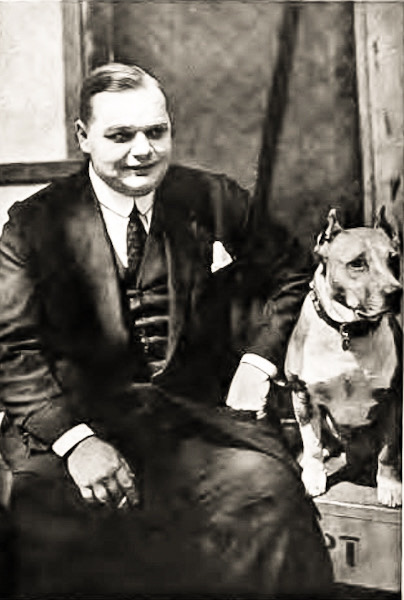
The only people unluckier than Fatty Arbuckle were the people considered to portray him in a movie: John Candy, Chris Farley and John Belushi all died suddenly after being considered to play the part. While you may know of the famous comedians, Candy, Farley and Belushi, we suspect that most readers are unfamiliar with Roscoe “Fatty” Arbuckle because he had died long before many of us were born in 1933.
So why does he appear on these pages?
In part, it’s because we believe that whatever their lane, famous people stand on the shoulders of the people who came before them. Today’s film comedian has silent movie star, Fatty Arbuckle, to thank for the innovativations he came up with to make a comedy. From filming from odd angles to emphasize a joke to using props (he could juggle anything from frying pans to vases), Arbuckle developed techniques that set the standard for future comedies. Below, we share a 12-second clip from his 1918 movie, “Good Night, Nurse!” to illustrate one of his innovations:
What you just saw may seem like nothing to today’s sophisticated movie-goer, but having the camera slowly go out of focus when his character is sedated was a clever use of the technology available in 1918. One hundred years ago, the genre of comedy was inventing itself, and Arbuckle was one of a handful of silent movie comedians who shepherded it along.
Perhaps Arbuckle’s greater contribution, however, was understanding how to make something funnier by using psychology and not just physical humor. He put himself in a viewer’s shoes to learn how to “milk” a joke, and sense when to stop. This isn’t to say he didn’t rely on pratfalls. Given his size (he weighed between 250 and 300 pounds for most of his adult life), he was surprisingly graceful when executing a fall. His use of props and his physical comedy methods set a standard for future comedians, but setting up situational humor that examined a character’s motives and feelings was genius.
It was Arbuckle who discovered Buster Keaton and nurtured his talent, but Arbuckle, himself, became the first major comedy star to make the transition from short subjects to feature films, and from silent movies to “talkies.” The transition to talking pictures, however, came only after an eleven-year exile from the screen.
A scandal will do that to a career.
Using his father’s name as a pseudonym, Fatty worked as a film director, and co-owned a popular California nightclub through the 20’s and 30’s, but in 1932, he was able to make a comeback after friends mounted a letter-writing campaign to movers and shakers in the movie industry. Fatty starred in a series of Vitaphone two-reel comedies, but just as he was about to sign a lucrative feature film contract with Warner Brothers, he died in his sleep at the age of 46.
Early on, we mentioned that there are a couple of reasons we write about once-famous people. The other purpose we have is born of curiosity about what these interesting people had as their canine companions. Fatty’s dog was the result of a bribe made to his actress wife, Minta Durfee, as she was dangling over the edge of a cliff in the movie, “Lane, Speed, and Thrills.” Terrified, she was promised a puppy if she kept her nerve, and sure enough, she was rewarded with a Staffordshire Bull Terrier puppy the couple named, “Luke.”
Luke not only became a beloved member of the family, but had his own acting career and earned $150 a year! Luke learned to climb ladders, jump from roof-to-roof, and even from one moving car to another. He worked with Buster Keaton and Al St. John, and of course, with Fatty. Enjoy several seconds in the clip below of Luke’s debut:
Image: Roscoe “Fatty” Arbuckle with his dog Luke from 1919 appears in the book, The First One Hundred Noted Men and Women of the Screen and is in the public domain in the United States because it was published before January 1, 1929.
